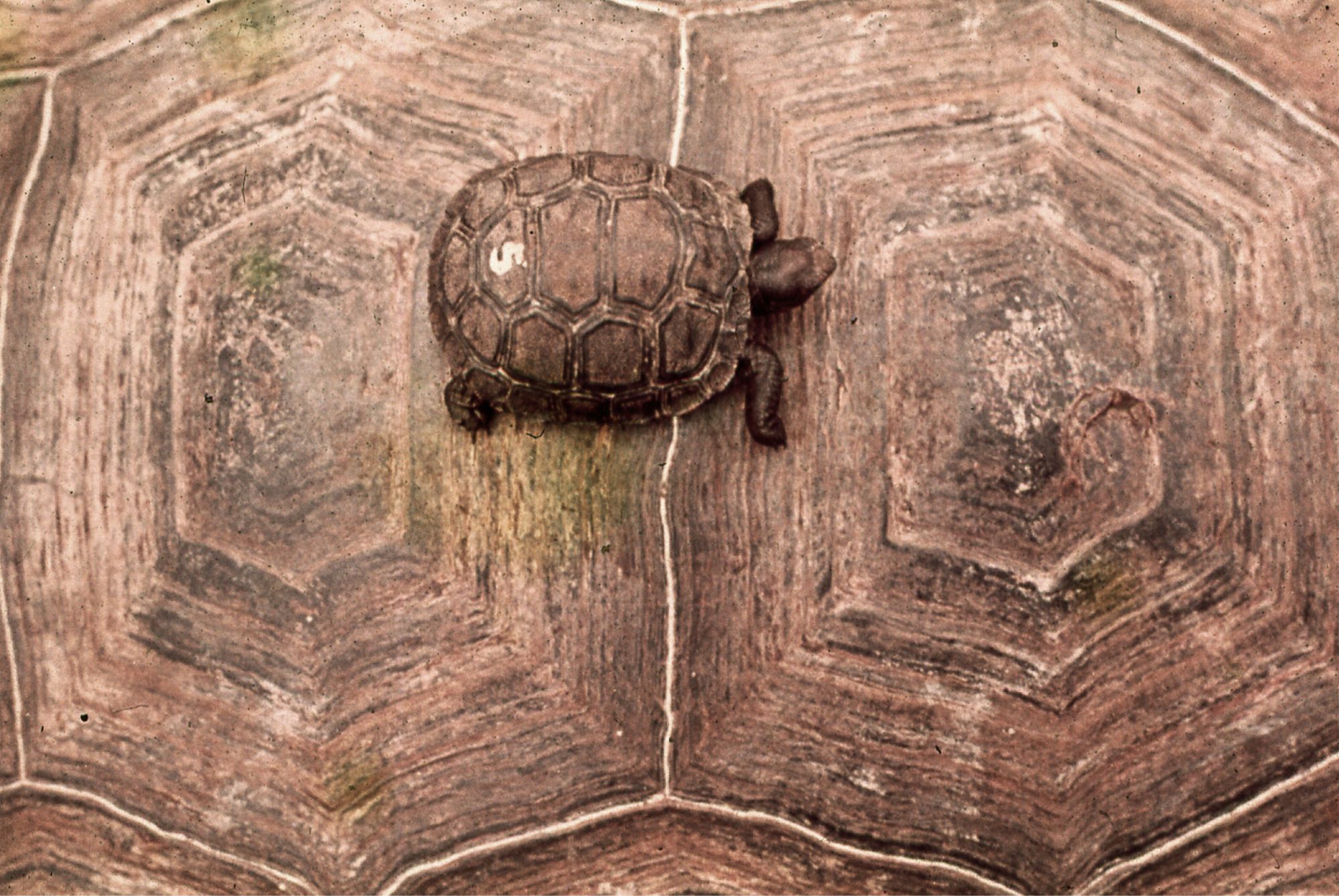Letters from the library
#08. A story in a picture
I remove the slide from the plastic sheet, which stores other nineteen, all in consecutive order. I take a look at the small notes crowded on the edges of the plastic (or cardboard, or glass, or metal) frame, sometimes scribbled directly onto the material, sometimes written on labels that barely hold there, sometimes typed on pieces of paper glued to the frame — and already showing a worrying brown color...
...and then I look at the picture against the light, trying to find out if I am holding the slide the right or the wrong way — head up or head down...
...and then I place the slide on that gadget from the 60s that I recovered from a corner of the archive. A gadget that some intelligent colleague from the past kept because s/he knew that at some point in the future it would be useful: a metal box with a thin, white, translucent plastic surface with a pair of lamps illuminating with all their power under it...
...and I bring my face close to the slide, and I put between my right eye and the film that other device, also inherited and also found in a corner of the archive: a kind of magnifying glass...
...and then, just then, I can see the picture.
And I realize that once upon a time —years ago, decades ago— there was someone who was in front of what I am seeing now, and decided to capture it, to keep it beyond their retinas so that others could enjoy what s/he was watching and experiencing. And they did that so that the picture, and the story that the picture represented, would not be lost.
Because there is always a story behind any picture: that is something known to all of us who devote ourselves to the preservation of the past. There is a story there, so the future generations may know about our adventures and dreams. It does not matter if it is a snapshot of a landscape or a simple and melancholic passport photo: in those skies, in those eyes, in those animals, in those groups of friends who hug and smile at the camera, there are one or several stories.
And sometimes, in rare occasions, the image is the summary of a long story, or the sum of many of them.
This is the case of the photograph that I am sharing alongside this letter: a slide that I rescued some time ago from one of the folders in the audiovisual collection of our archive, and that left me with my face stuck for a long time to the magnifying glass and to the bright screen, smiling, until the heat from the lamps made me turn away.
Among the thousands and thousands of slides that we have already reviewed for digitization, I have found countless pictures that reflect different moments of the giant tortoise breeding program in Galapagos. Pictures immortalizing many of the program's architects, participants and collaborators, both from the Galapagos National Park and the Charles Darwin Foundation.
But I think this one condenses in itself the entire program, the entire project, all the ideas that drove that work, all the desires that gave it wings. Seeing that smallness on top of that enormity, and knowing that thanks to us, to our work, the former may have at least one chance to become the latter, is absolutely exciting.
It is a long story of hopes and efforts —and the promise of another story, that of a tortoisy life in some Galapagoan corner— embedded in a colorful 3 x 4 film rectangle, stored alongside thousands of other stories that are waiting to be discovered, remembered and relived...
...to become links in other different stories, which may be collected in other pictures.
[The slide, whose authorship has not yet been confirmed, was used in a WWF program entitled "Galapagos: The islands at the end of the world", and was part of those sets of slides that, together with a written script and, at times, several audio cassettes, were distributed by the organization at least 40 years ago for environmental education and awareness purposes.]
[See also: A little tortoise].
Subject categories: Conservation | Herpetology | History of CDF | History of Galapagos | History of science
Keywords: Endangered animals | Reptiles | Slides | Tortoises
Time framework: 1980
Text & picture: Edgardo Civallero (edgardo.civallero@fcdarwin.org.ec)
Publication date: 1 October 2020
Last update: 1 November 2022
